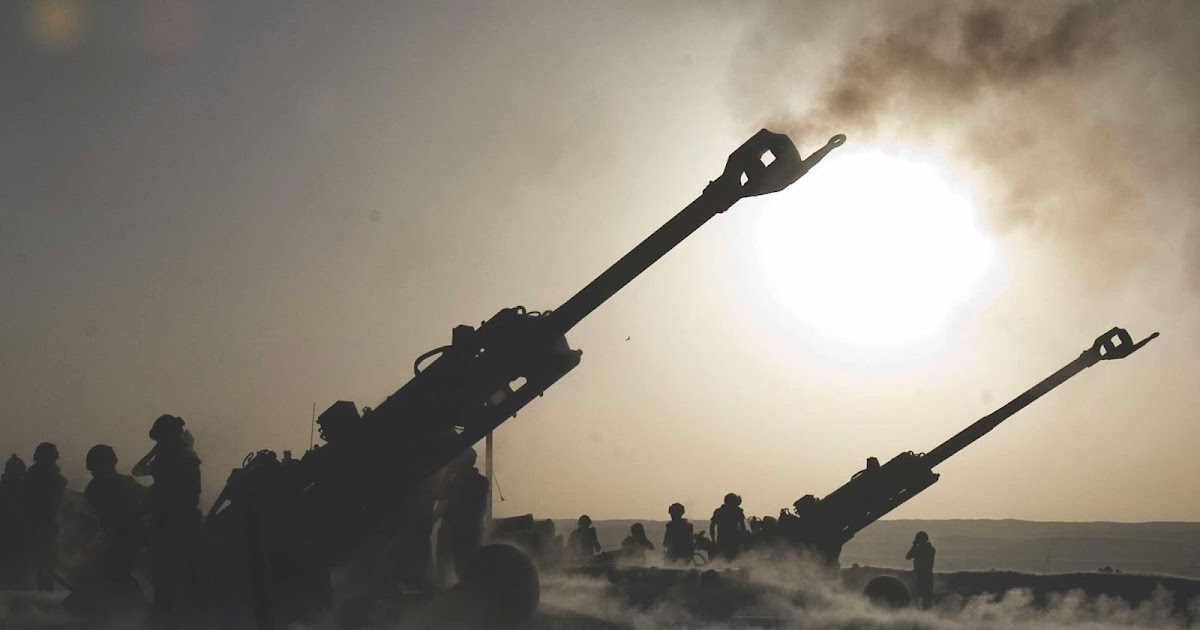
Three “desi” systems that are on display at DefExpo 22 are headed for success (pictured above is of the M777 Ultralight Howitzer)
By Vikas Gupta
Trade Standard, 20 Oct 22
With the theme “Aatmanirbhar Bharat” (Self-Governing India) underpinning India’s premier defense exhibition – DefExpo 22 – attention is focused on the India pavilion and a sprawling display of the Defense Research and Development Organization (DRDO).
Several artillery guns, armored vehicles and tanks are prominently displayed in the DRDO exhibit, underscoring some success in the development of these key weapon platforms for the military. Here are three systems that are heading for success.
Mounted Gun System (MGS)
There has long been interest in the 155 millimeter (mm), caliber 52 (cal) Advanced Towed Artillery Gun System (ATAGS), which DRDO is developing in partnership with the Tata and Kalyani groups. Now, without fanfare, the DRDO has produced an offshoot of the ATAGS – called the 155 mm/52 cal Mounted Gun (MGS) – that could become a battle winner that is central to the firepower menu of the army.
The ATAGS is a conventional towed howitzer, which requires a wheeled tractor to tow it between firing positions. In the MGS, however, the entire gun is mounted on a wheeled tractor, from where it can be pulled without dismantling and lengthy preparation. Putting the MGS into action takes just 80 seconds, while taking it out of service takes 85 seconds.
The MGS weighs 15 tons, and the Kolos Tatra tractor on which it is mounted weighs another 15 tons. The total weight of 30 tons allows you to comfortably cross 40-ton bridges on most highways.
The MGS has a ready customer as the Indian Army’s artillery plan calls for the purchase of 814 MGS to boost artillery firepower. The DRDO wants the military to acquire MGS under the high priority Chapter IV of the 2020 defense acquisition process. This chapter places the highest priority on:”Acquisition procedure for systems designed and developed by DRDO/DPSU/OFB”.
DRDO’s MGS faces competition from companies such as Bharat Forge and Tata Aerospace and Defense (A&D), which have also developed their own MGS. Only if the MoD categorizes this acquisition as Chapter IV would the field be clear for the DRDO’s MGS.
However the DRDO is confident about the superiority of its MGS. It successfully passed the tests in deserts and high altitude areas (HAA), showing high accuracy and consistency. To protect the crew when the enemy counterfires, there is an armored cabin (currently armored in steel, to be developed in composite material) in which they can take shelter.
The light tank
Chinese encroachment across the Line of Actual Control (LAC) into Indian-claimed territory in April 2020 prompted the DRDO to resume work on a hotly debated project: the development of a 25-ton light tank that would would be mobile enough for the high mountain frontier of India. areas, for jungle terrain and for areas with narrow roads and bridges.
As the DRDO completed its design work, the Armored Corps Directorate General (DGAC) finalized its Preliminary Staff Qualitative Requirements (PSQR) which detailed the precise specifications of the tank.
The DRDO was awarded the project in November 2021, with a three-year deadline. By November 2024, it must complete trials and immediately begin delivery to the military.
The tank’s key component – the engine and transmission – must be purchased commercially. MTU engines from Germany, Caterpillar from the USA and Cummins are being evaluated. The transmissions will be chosen from Renk of Germany and the British firm Allison.
Protection is modular, with bolt-on, adaptable armor providing STANAG 4 level protection in the tank’s 60 degree frontal arc and STANAG 2 elsewhere. It will have a high pressure tank gun, either 105mm or 120mm.
According to DRDO sources, this effort is named Project Zorawar, after the legendary Sikh general who took his armies deep into Tibet.
Wheeled Armored Platform (WhaP)
The DRDO developed the WhaP as the basic platform for a family of mobile, protected and multi-purpose vehicles, including a command post vehicle, a reconnaissance vehicle for a chemical, biological, radiological and nuclear (CBRN) battlefield , for amphibious reconnaissance, or even use it as a light armored ambulance.
It must be 8×8 wheeled, non-tracked, and weigh 19 to 27 tons. Up to a weight of 24.5 tons, it will be amphibious, that is to say able to float. With a hydrogas suspension and a 600 HP Cummins engine coupled to an Allison transmission, the WhaP is very mobile.
Protection should be modular, with bolted, adaptable panels that provide protection up to STANAG Level 4. The floor can be reinforced to withstand an improvised explosive device (IED). Wish lists prepared for various UN missions have been recycled into the WhaP.
The main armament is to be a 30mm cannon, mounted on a turret with an improved sighting system, which is being developed by the DRDO in partnership with Bharat Electronics Ltd.
The DRDO has chosen Larsen & Toubro as its “design and production partner” (DCPP). This means that L&T is active in the design process.






